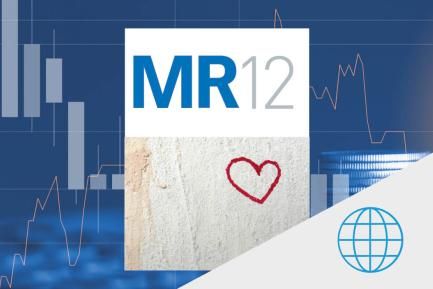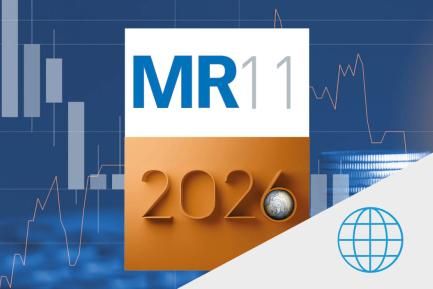
International economic activity, awaiting an acceleration in immunisations
The COVID-19 pandemic continues to be the main factor determining the economic outlook in 2021
With the notable exception of China, in the early stages of the year economic activity in the major international economies remains below pre-pandemic levels and continues to be constrained by the restrictions required to contain the spread of infections. That said, in recent months the world’s major economies have shown greater resilience, as already demonstrated by the better-than-expected GDP figures for Q4 2020 in the midst of the wave of infections. In addition, the PMI business sentiment indicators reflect the fact that the global economy remains resilient to the impact of the pandemic in the first few months of 2021, with the figures for January and February at similar levels to those of Q4 2020, slightly above the 50-point threshold that separates contraction from expansion. This resilience denotes the more targeted nature of the restrictions in place, which have posed less of a constraint for the industrial sector, and a certain capacity shown by economies to adapt, as well as the support from economic policies and the accommodative financial environment. Over the coming quarters, as the vaccinations progress and especially once the risk groups are immunised, we can expect the reduced pressure on the health system to trigger a more sustained economic revival.

The recovery faces high – and uncertain – risks
Although the latest wave of SARS-CoV-2 infections began to temper somewhat in February, the vaccination campaigns still have some way to go in most counties and the more infectious strains of the virus pose a risk to economic performance in the short term. In addition, the medium-term risk map is complex. On the one hand, support from economic policies remains key to preventing the destruction of the productive fabric of the economy which could occur in the event of a premature withdrawal of the stimulus measures. On the other hand, when the economic recovery gains traction, the push from demand and pent-up savings following the pandemic could generate stress if they are met with bottlenecks in production chains. This stress should fade as economies normalise, but in a context marked by significant monetary and fiscal expansions, the combination of upside surprises in the first inflation data of the year and the presentation of a significant new fiscal stimulus in the US has generated fears of overheating and shaken some financial asset prices, as set out in the Financial Markets section.

ADVANCED ECONOMIES
The Biden Administration boosts the fiscal stimulus in the US
At the end of February, the House of Representatives approved the proposal for a new aid package to combat the COVID-19 crisis presented by President Biden in January, with a budget of 1.9 trillion dollars. Once ratified in the Senate, it will be an addition to the 0.9 trillion approved in December (bringing the total to around 15% of GDP). The proposal sparked a debate among prominent economists, with experts such as Olivier Blanchard and Larry Summers warning that it could entail inflation risks. US Treasury Secretary and former Fed Chair Janet Yellen, meanwhile, acknowledged the risks of inflation but argued that the biggest risk today is not doing enough for an economy that is «injured» by the pandemic. In this context, inflation expectations in the financial markets were volatile in February, while headline inflation remained stable at 1.4% in January.

US economic activity forges ahead
The available data indicate that the US economy continues to grow in the first quarter of the year. In particular, in January and February, the PMI and ISM business sentiment indices remained at levels indicative of growth in economic activity (i.e. above the 50-point threshold) in both the manufacturing and the services sector (the ISM for February stood at 60.8 and 55.3 points for manufacturing and services, respectively). The indicators also show a labour market that continues to recover employment at a notable rate, although the unemployment rate remains above 6% (still a far cry from the 3.5% recorded before the COVID-19 outbreak). Thus, at the end of February, short-term forecast models suggested that US GDP could grow by around +2% quarter-on-quarter in Q1 2021 (although they do not yet incorporate the impact that the winter storm may have had in many southern states).

One step behind, the European economy holds up
In the euro area, the economic indicators show that activity is resilient but more constrained by the COVID-19 restrictions than in the US. In January, retail sales fell by 5.9% compared to December 2020 (–6.4% compared to January 2020), a bigger decline than expected by the consensus of analysts. The unemployment rate, meanwhile, remained stable at 8.1% (+0.7 pps compared to the 7.4% of January 2020, a very contained increase thanks to the furlough schemes still in force in European economies). The composite purchase managers’ index (PMI) for February was in slightly contractionary territory (48.8 points), weighed down by the difficulties in the services sector (45.7 points, also below the recession-expansion threshold of 50 points), while manufacturing remained in expansive territory (57.9 points). These sentiment indices suggested a certain disparity in economic activity from country to country, with better performance in Germany than in the rest of the euro area’s major economies.

Volatility shakes inflation in the euro area
The price index for the euro area registered a surprising and widespread rally in the first two months of the year. Headline inflation rose by +1.2 pps in January to 0.9% year-on-year, where it stabilised in February, while core inflation (which excludes the most volatile components) also surged, reaching 1.4% in January (+1.0 pps, the biggest increase in the historical series) and 1.1% in February. This sharp rise does not reflect an increase in the underlying inflationary pressures; rather, it is the result of a combination of factors related to the pandemic. These include the delay in the January sales season, the new relative weights of the various components that make up the index (skewed towards goods and services that suffered higher rates of consumption and inflation in 2020) and German VAT (since January, the tax rate has returned to the same level as prior to the pandemic, but its temporary cut last July generated a base effect that pulled inflation down in the second half of 2020). These factors, and other similar ones (such as a base effect due to the low oil prices in the spring of 2020), will make European inflation volatile in 2021. Nevertheless, as these effects fade with the normalisation of the economy, they ought not to condition the ECB.

Japan contracted 4.8% in 2020
Japanese GDP grew by 3.0% quarter-on-quarter in Q4 2020 (−1.2% year-on-year), a notable figure, especially following the sharp rebound in Q3 (+5.3% quarter-on-quarter). Despite these two quarters of significant growth, the total for the year stood at −4.8%. It should be recalled that the economic shock of the COVID-19 crisis came at a time of weakness in the country, as the economy was feeling the negative effects on economic activity of the VAT rise and the devastating typhoons of late 2019. With a view to Q1 2021, the resurgence of the pandemic and the restrictions on activity and mobility could lead to a slight decline in Japan’s economic activity.

EMERGING ECONOMIES
China is a few steps ahead
The pandemic remains well under control in China, and the data show that the rise in infections suffered in January in some provinces was rapidly quelled by the authorities. This control of the COVID-19 pandemic has allowed China’s GDP to rise above pre-pandemic levels for several quarters now, and although the publication of economic data was somewhat scarce with the celebration of the Lunar New Year in February, the indicators continue to show buoyant economic activity. In this context of strength, the authorities recently announced a GDP growth target («above 6% in 2021») which should be easy to achieve given the base effect of the pandemic (for instance, in Q1 and Q2 2021, GDP growth could average around 10% year-on-year, as it will be calculated relative to GDP levels that were greatly depressed in Q1 and Q2 2020).

Divergence among other emerging economies
For 2020 as a whole, Turkey registered a surprising positive growth of 1.8%, making it one of the few emerging countries that managed to avoid recession. Data released in February also showed that Russia and Brazil resisted the pandemic better than other emerging economies (in 2020 as a whole their GDP contracted by 3.1% and 4.1%, respectively), while India’s GDP fell by an uncompromising 7.0%. It should be recalled that during Q2 2020 India was among the economies hardest hit by the pandemic, with a sharp drop in economic activity and insufficient stimuli.



